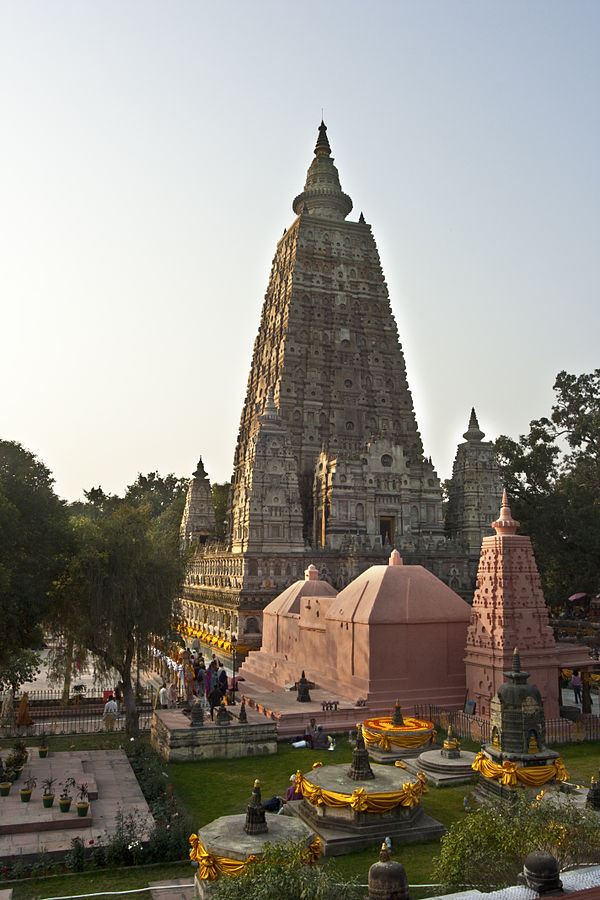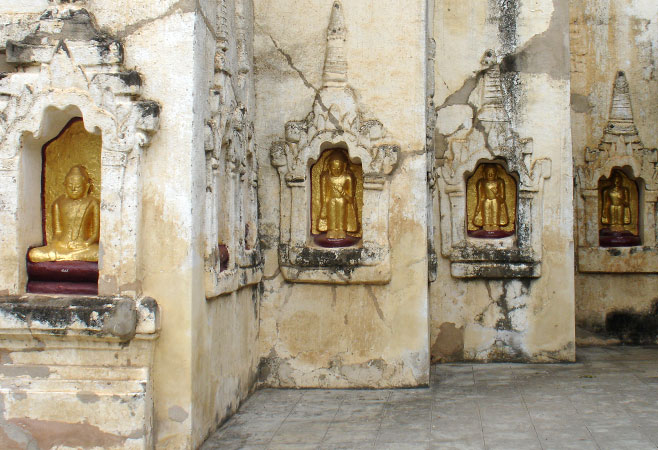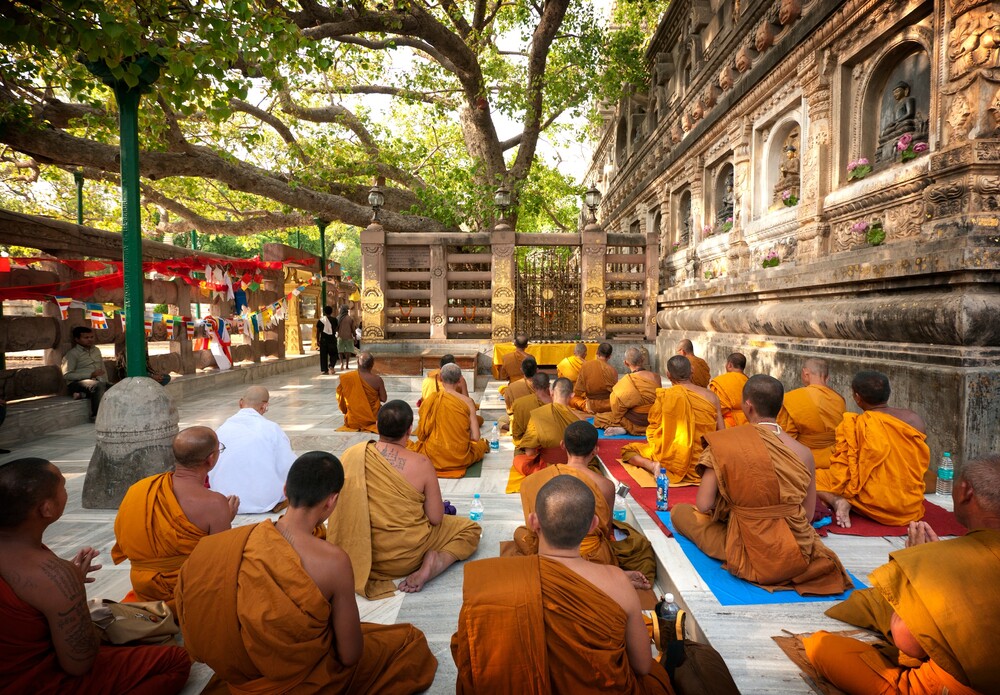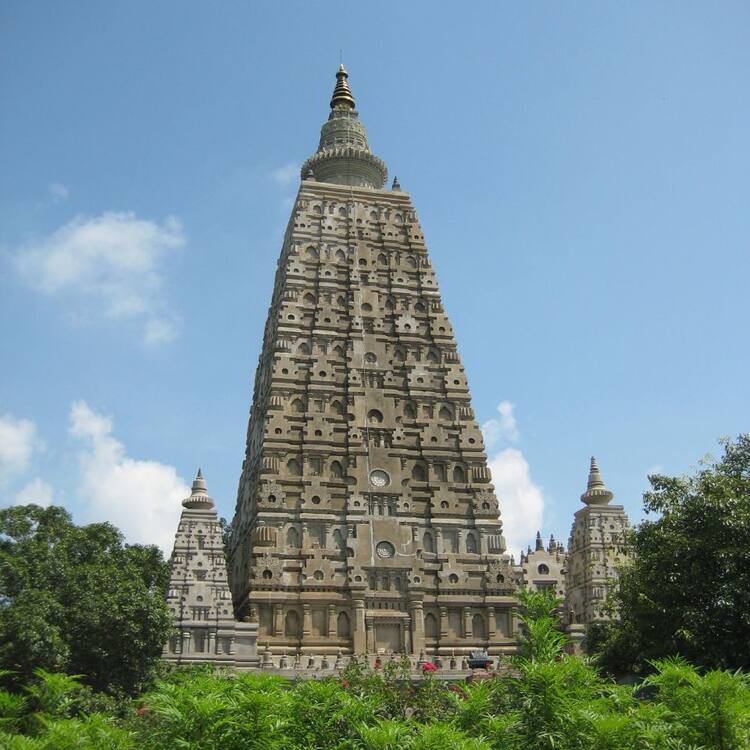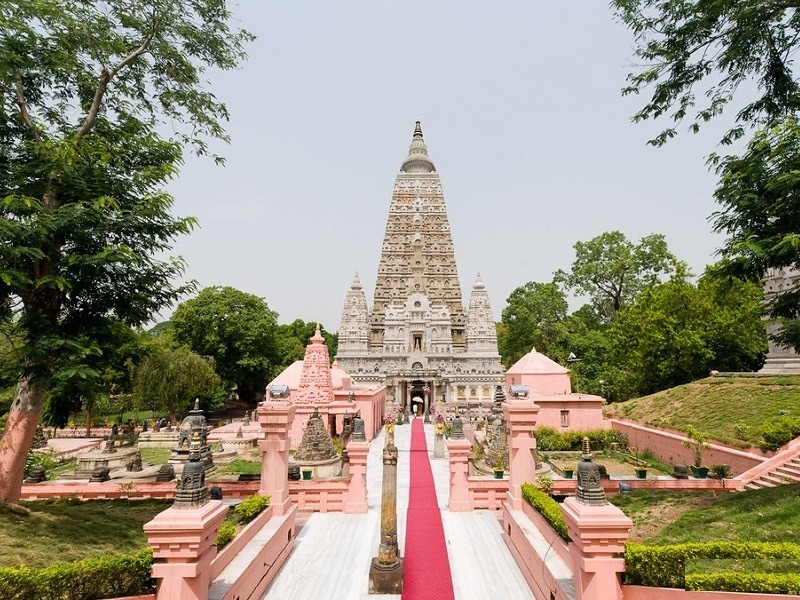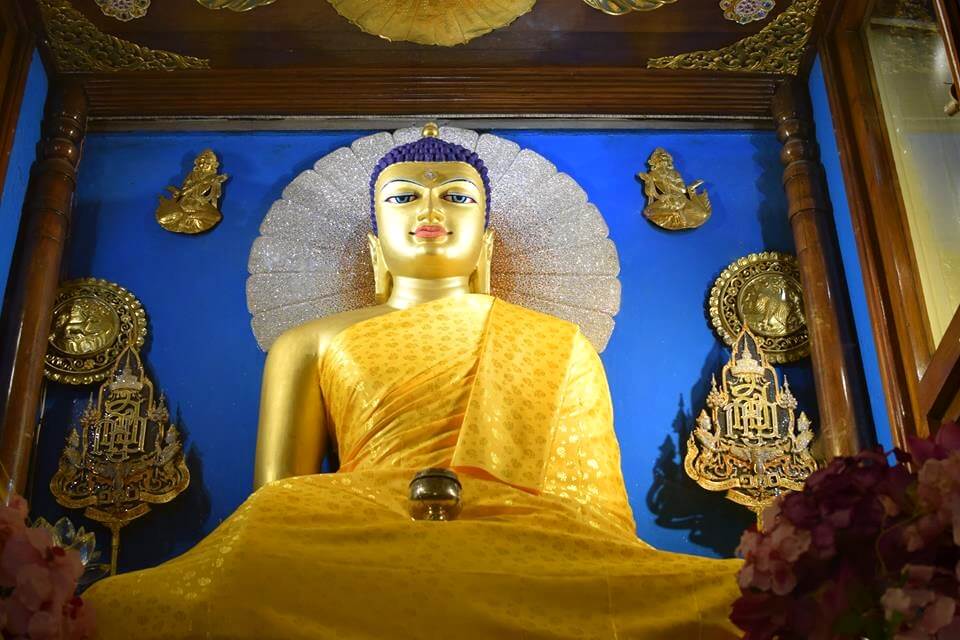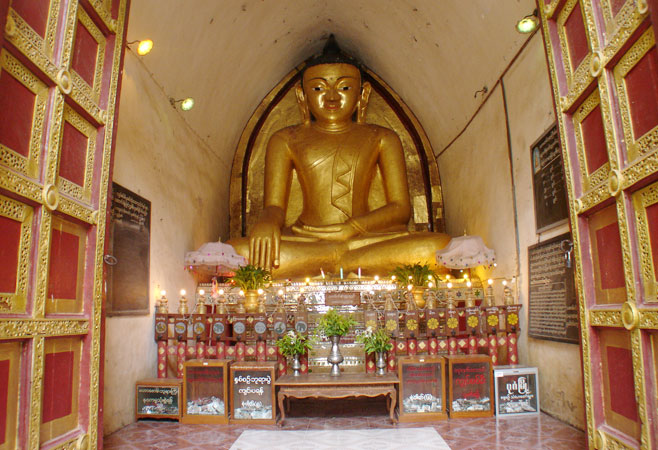
Bodh Gaya: A Journey to Spiritual Awakening
Table of Contents
Bodh Gaya: A Sacred Path to Enlightenment
Bodh Gaya, nestled in the heart of Bihar, India, is not just a place on the map. It’s a spiritual epicenter—a destination that calls out to millions who seek peace, inner transformation, and spiritual awakening. In the lush green surroundings of this serene town stands the Mahabodhi Temple, the site where Siddhartha Gautama, the Buddha, achieved enlightenment under the Bodhi Tree. For centuries, people have journeyed to this sacred spot in pursuit of something far beyond a mere sightseeing tour. It’s a place of deep introspection, personal growth, and profound spiritual meaning.
Why Do People Come to Bodh Gaya?
You might wonder, what is it about Bodh Gaya that draws so many people from around the globe? Why do pilgrims, seekers, and even casual travelers find themselves making the journey to this quiet town in India?
1. The Quest for Spiritual Awakening
For Buddhists and non-Buddhists alike, Bodh Gaya represents the ultimate symbol of spiritual enlightenment. This is the place where Siddhartha Gautama, a young prince who left behind a life of luxury, sought answers to life’s most fundamental questions. His quest—what is the root cause of suffering and how can we transcend it?—led him to meditate under the Bodhi Tree, where, after days of contemplation, he attained the profound wisdom that would become the foundation of Buddhism.
When you visit Bodh Gaya, there’s an undeniable sense of sacredness in the air. You can almost feel the energy of those who have meditated here for centuries, seeking inner peace, balance, and a deeper understanding of the universe. This is where it all began—the birthplace of wisdom, compassion, and enlightenment. Walking in the Buddha’s footsteps, you can sense the deep stillness that invites you to reflect on your own journey, to think about your own quest for peace and self-realization.
2. A Sacred Space to Offer Prayers for Loved Ones
In addition to spiritual seekers, many people come to Bodh Gaya for another deeply personal reason: to pray for their departed loved ones. According to Buddhist tradition, the merit gained from performing good deeds and offering prayers can help those who have passed, particularly parents, move towards a better existence. Bodh Gaya offers an unparalleled opportunity to make offerings of light, incense, and flowers, all while meditating and sending thoughts of compassion and kindness to those who have left this world. It’s a place where the living can honor the dead and create positive energy that transcends the physical realm.
3. A Place for Introspection and Meditation
Whether you’re looking for spiritual growth or simply seeking a quiet space to reflect, Bodh Gaya offers an unparalleled environment for meditation. Surrounded by lush gardens and the tranquil sound of chanting, you can feel your worries slip away. Many come here to disconnect from the fast-paced world and reconnect with their inner selves. The air seems to be filled with a kind of stillness that’s rare in most places. The Bodhi Tree, standing proudly in the temple complex, beckons you to sit beneath its boughs and meditate, just as the Buddha did more than two millennia ago.
The History of Bodh Gaya: A Journey Through Time
To truly appreciate Bodh Gaya, it helps to understand the rich history that gives this place its spiritual depth.
The Buddha’s Moment of Enlightenment
Bodh Gaya’s significance begins with the life of Siddhartha Gautama, a prince who, after witnessing the suffering of the world, renounced his royal life to seek answers. His journey took him to the Bodhi Tree, where he sat in meditation under its shade, vowing not to rise until he had found the key to overcoming suffering. After days of intense contemplation, Siddhartha attained enlightenment and became the Buddha, the “Awakened One.”
Bodh Gaya is not just the location of Buddha’s enlightenment—it is the place where the world was introduced to the path of liberation, the path to end suffering. It’s where the Buddha first realized the Four Noble Truths and the Eightfold Path—the core teachings of Buddhism that continue to guide millions around the world.
Emperor Ashoka’s Legacy
Bodh Gaya’s importance was further solidified when Emperor Ashoka, one of India’s most revered rulers, visited the site in the 3rd century BCE. A devout Buddhist, Ashoka built a small shrine at the spot and also erected a stone pillar known as the Ashoka Pillar, which still stands today. This pillar marks the site where the Buddha achieved enlightenment and remains a testament to Ashoka’s dedication to spreading Buddhism across the subcontinent.
Over time, the temple complex grew, with structures and monuments added by successive rulers. These renovations continued through the centuries, creating a site that reflects the continuity of spiritual practice and dedication to the Buddha’s teachings.
The Mahabodhi Temple: A Masterpiece of Architecture
The Mahabodhi Temple, with its towering spire and intricate carvings, is not only a spiritual landmark but also an architectural marvel. It’s a blend of simple beauty and profound meaning, standing as a symbol of humanity’s eternal search for wisdom and peace.
The Towering Shikhara
At the heart of the Mahabodhi Temple stands its massive Shikhara—a pyramid-shaped tower that rises to 55 meters in height. The spire is decorated with symbols of Buddhist art, representing various elements of the Buddha’s life and teachings. The Shikhara is not just an architectural feat; it is a beacon for all who seek spiritual illumination, guiding visitors toward the very heart of the temple and the Bodhi Tree.
The Bodhi Tree: The Center of Everything
The Bodhi Tree is the heart of Bodh Gaya, and sitting under its shade feels like sitting in the presence of history itself. It’s here that the Buddha attained his enlightenment, and it is still regarded as a living symbol of spiritual awakening. Pilgrims from all over the world gather under its branches, meditating in silence and offering prayers.
The Vajrasana: A Sacred Throne
Beneath the Bodhi Tree lies the Vajrasana, or Diamond Throne, marking the exact spot where the Buddha sat in meditation. This sacred stone platform is surrounded by railings and adorned with carvings of the Buddha’s life. It serves as the focal point of the Mahabodhi Temple, reminding everyone who visits of the Buddha’s transformative journey and the eternal path to wisdom.
Bodh Gaya’s Global Significance: Connecting Cultures and Spiritual Paths
Bodh Gaya isn’t just important to Buddhists—it is a spiritual destination for people from all walks of life. Monks, pilgrims, and tourists from around the world come together here, united by a common desire for inner peace, spiritual awakening, and cultural exchange.
A Hub of International Buddhist Traditions
Surrounding the Mahabodhi Temple are monasteries built by various Buddhist countries, including Thailand, Myanmar, Japan, and Tibet. Each monastery reflects the unique Buddhist traditions and practices of its country. The diversity of these practices creates a rich, welcoming atmosphere where people from different cultures come together in their shared devotion to the Buddha’s teachings.
Festivals and Rituals: A Time for Collective Reflection
The most notable celebration in Bodh Gaya is Buddha Purnima, the day that commemorates the birth, enlightenment, and death of the Buddha. During this time, the temple complex is filled with vibrant ceremonies, prayers, and cultural performances. Pilgrims from all over the world gather to honor the Buddha, creating a truly unforgettable experience for visitors.
Visiting Bodh Gaya: A Personal Spiritual Journey
If you’re planning to visit Bodh Gaya, it’s not just about sightseeing—it’s about embarking on a spiritual journey that resonates with your own quest for inner peace. Here’s everything you need to know to make the most of your visit.
How to Get There
Bodh Gaya is easily accessible by air, rail, and road. The nearest airport is Gaya International Airport, just 11 km from the temple, with flights from major cities. The closest railway station is Gaya Junction, which is well-connected to other parts of India.
Best Time to Visit
The best time to visit Bodh Gaya is between October and March, when the weather is cooler and more pleasant. For those who want to experience the cultural vibrancy of the region, Buddha Purnima is a perfect time to visit.
Temple Timings and Etiquette
The temple is open daily from 5:00 AM to 9:00 PM. For a more peaceful experience, visit early in the morning or late in the evening when the temple is less crowded. Be sure to dress modestly and respect the sacred space during your visit.
Conclusion: A Place of Transformation
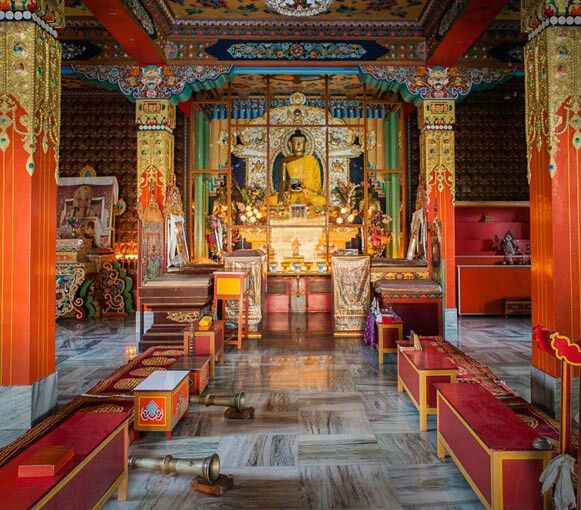
Bodh Gaya is more than a travel destination—it’s a place where the journey inward begins. Whether you’re seeking spiritual clarity, hoping to offer prayers for loved ones, or simply looking for a place of peace and reflection, Bodh Gaya offers a transformative experience that stays with you long after you leave. It’s a space that calls to the heart, offering answers that transcend words and filling your soul with an unshakeable sense of tranquility.


